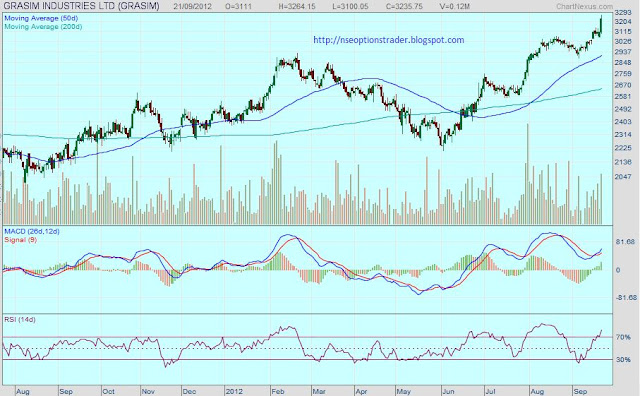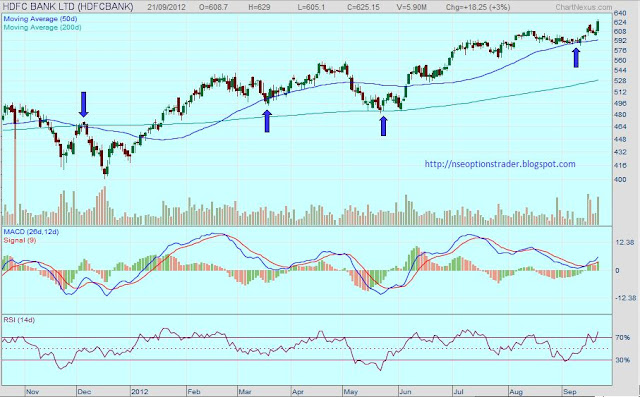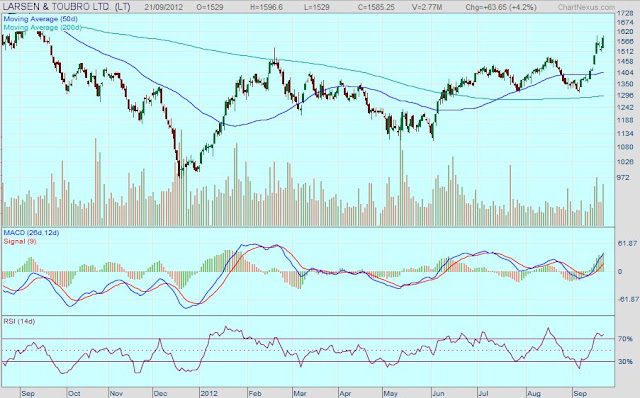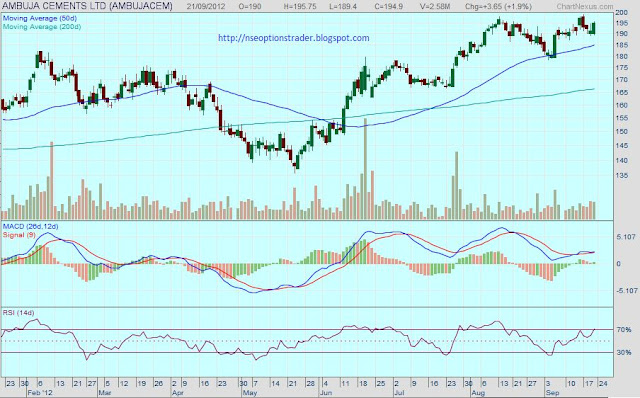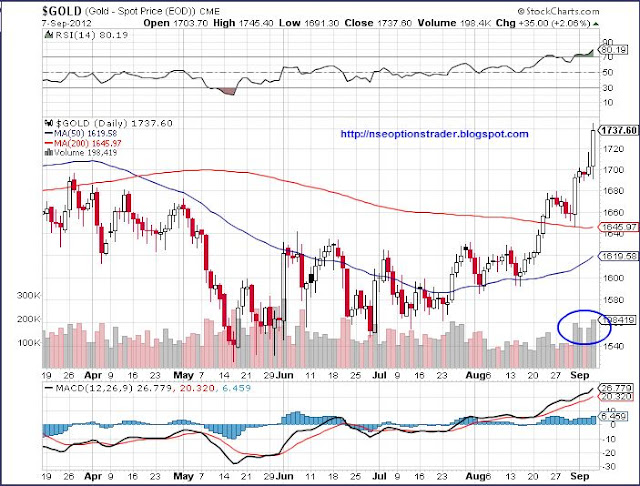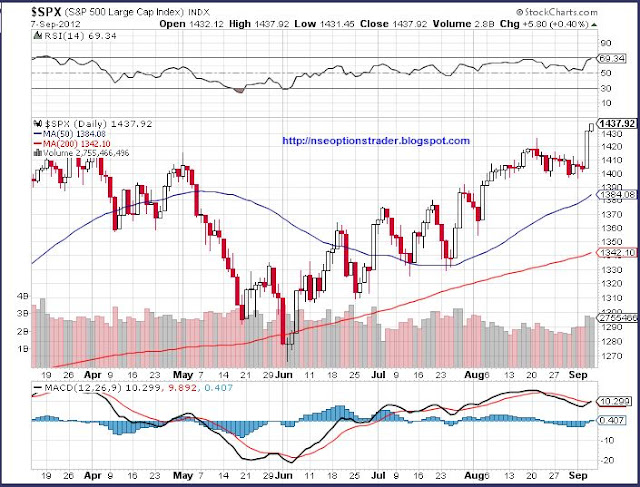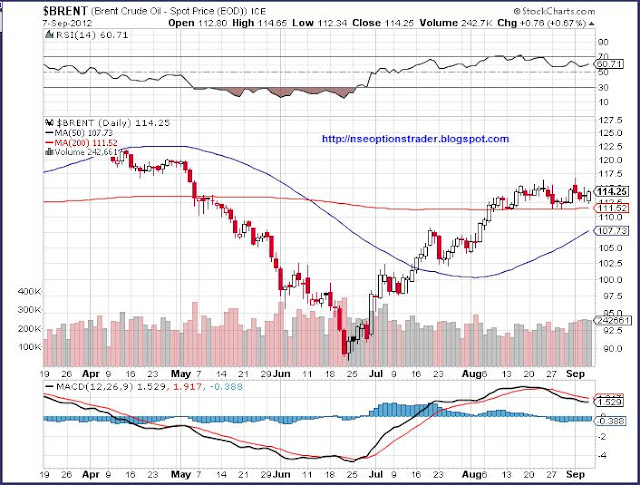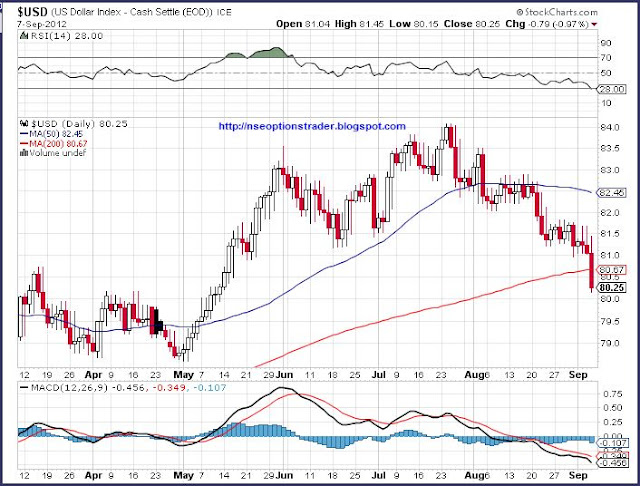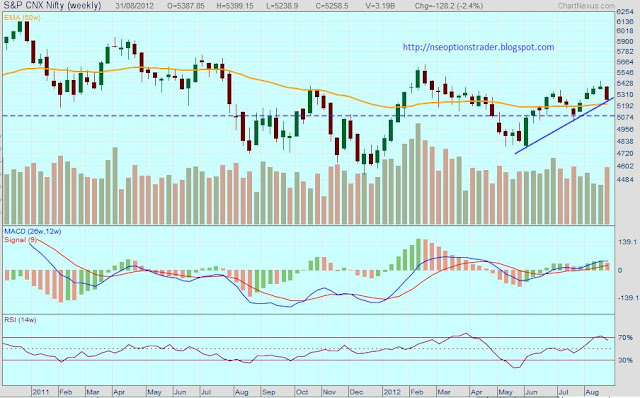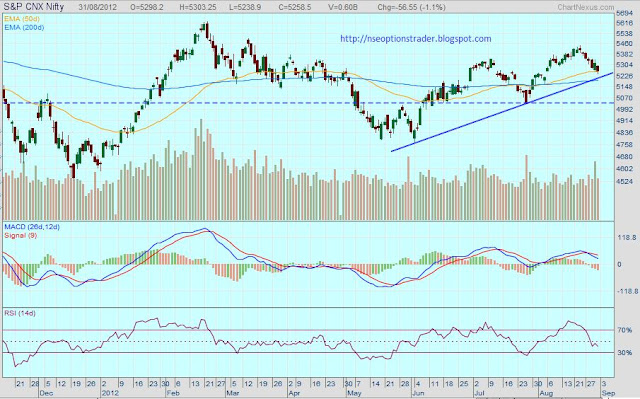MACD
Its
been long time since I posted any tutorial. MACD (Moving Average
Convergence-Divergence) post has been in work for past 2-3 weeks and other
post took precedence due to very dynamic moves in the markets but I will feel
guilty to delay it any further.
We
have already seen Moving Averages which are trend following Indicators. We have
seen RSI which is an Oscillator. Both have their own advantages and downside.
MACD, to start with, you can say combines best of both Worlds. MACD takes two
trend following Indicators (Moving Averages) and turns them into an Oscillator.
MACD gives us valuable information about not only the trend but also the
momentum (strength) in the direction of the change. Before deliberating
further, let us see how MACD is defined and constructed.
MACD
consists of three components usually defined as MACD (12, 26, 9) which is most
popular combination. 12 and 26 here depicts that MACD is using Exponential
Moving Average of 12 duration and 26 duration (Days, Weeks or Months) for
calculating MACD Line. Third letter, 9 indicates Exponential Moving Average of
MACD Line for 9 duration which is used as Signal Line. MACD Line is calculated
as 12 EMA Value - 26 EMA Value and Signal Line is calculated as 9 EMA of MACD
Line. Histogram that you see with MACD is the difference between MACD Line and
Signal Line. The centerline around which MACD Line oscillates is also called as
zero line. You can use other durations for constructing MACD depending on your
time horizon and sensitivity requirements. Please see the MACD in the chart
below to familiarize yourself with above terms.
Reading
MACD
Let
us now see how exactly we get information from MACD. As per above formula if 12
EMA (which is faster, more responsive) is higher than 26 EMA, the MACD Line is
in positive territory. Positive value increases when 12 EMA is increasing at a
faster speed with respect to 26 EMA which also indicates that the positive
momentum is increasing. Similarly when negative value increases, it means that
12 EMA is lesser than 26 EMA and the difference is increasing
indicating a stronger negative momentum. This is the most basic reading of
MACD.
MACD
Signals
Traders
use MACD is varieties of ways to identify trading signals. Some of the popular
MACD Signals are listed below;
- Signal Line Crossovers
- Centerline Crossovers
- Divergence
I
will make another post to explain each of the above strategy in details and
with examples.
In a
nutshell
MACD
has the unique advantage of identifying trend as well as strength (momentum).
Unlike RSI, MACD does not help in identifying overbought or oversold conditions
and it does not have any upper or lower levels which limit its movement. Since
MACD is a difference between two EMAs, its value depends on value of the
underlying and it may totally differ for a stock worth 10 Rs or for NIFTY at
5700 level. Hence don't compare MACD of two different scripts or
underlying with each other. Also, we can use different durations of EMA to
change the sensitivity of MACD e.g. MACD (5, 31, 5) would be more sensitive
than MACD (12, 26, 9). I prefer to go with the standard used format of (12, 26,
9). Never felt the need to try any other combo.
Now,
after completing this post, I am feeling a lot better and lot lighter. Will
quickly complete the follow-up post on MACD Signals with more graphs and little
commentary to close this chapter. As usual, will lover to know what you think
of the post so go on and let me know. Happy Trading.

